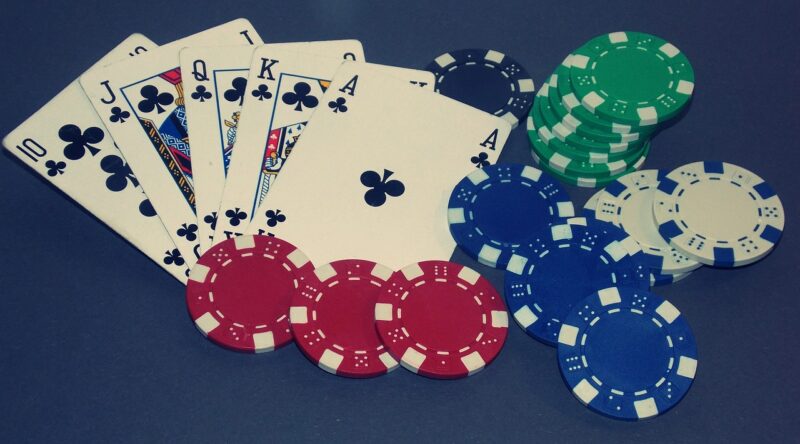In the high-stakes world of poker, understanding how to manage your stack is essential to your success at the table. From knowing when to build it up to how to protect it, the art of managing your poker stack is a crucial skill that can make or break a player’s game. In this article, we will delve into the intricacies of stack sizes and how to use them to your advantage in the ultimate game of skill and strategy. So sharpen your wits and prepare to master the art of stack management – your next big win could depend on it.
Building Your Poker Stack: The Importance of Stack Sizes
In the game of poker,understanding the importance of stack sizes is crucial for success at the tables. Your stack size can greatly influence your strategy, decision-making, and overall gameplay. Managing your stack effectively can mean the difference between winning big or losing it all. By gaining a deeper understanding of stack sizes, you can increase your chances of coming out on top in any poker game.
The relationship between stack sizes and betting: Stack sizes play a significant role in determining how much you can bet or raise during a hand. The size of your stack will influence the size of your bets, as well as the potential risk and reward associated with each decision. Understanding how to leverage your stack size to your advantage is key to maximizing your profits and minimizing your losses.
Adjusting your strategy based on stack sizes: One of the key skills of a triumphant poker player is the ability to adapt their strategy based on their stack size and the stack sizes of their opponents. Knowing when to be aggressive with a big stack or when to play more conservatively with a short stack can give you a significant edge at the poker table. By carefully managing your stack sizes and adjusting your strategy accordingly, you can optimize your chances of winning in any poker game.
| Stack Size | Optimal Strategy |
|---|---|
| Deep Stack | Aggressive play, bluffing, and maximizing value |
| Short Stack | Tight play, selective aggression, and picking spots wisely |
| Middle Stack | Adaptable play, mix of aggression and caution, and reading opponents |
Strategically Adjusting Your Play Based on Stack Size
One crucial aspect of becoming a successful poker player is understanding how to strategically adjust your play based on your stack size. Your stack size determines the range of actions you can take in a hand, from aggressive moves to conservative plays. By mastering the art of managing your stack effectively, you can increase your chances of winning and outsmarting your opponents.
When your stack size is large, you have more versatility and can afford to take calculated risks. Bold aggressive plays can put pressure on your opponents and force them to make difficult decisions. On the other hand, if your stack is small, you may need to tighten up your range and play more cautiously to avoid getting eliminated. By adapting your strategy to your stack size, you can control the pace of the game and dictate the action at the table.In tournaments, understanding how to navigate different stack sizes is crucial for long-term success. For example, when you have a medium stack, you can use your position to your advantage and pick your spots carefully. Bold Though, when your stack is short, you may need to go all-in with marginal hands to stay alive. By being aware of how your stack size influences your decisions, you can adjust your play accordingly and increase your chances of making deep runs in tournaments.
| Stack Size | Strategy |
|---|---|
| Large Stack | Aggressive plays to pressure opponents |
| Medium Stack | Strategic positioning and selective aggression |
| Small Stack | Play cautiously and look for opportunities to go all-in |
Maximizing Your Profits by Managing Your Stack Effectively
Managing your stack effectively is crucial in maximizing your profits at the poker table. Understanding stack sizes and how to play them can make a significant difference in your overall success. By mastering the art of managing your poker stack, you can stay ahead of your opponents and increase your chances of winning big.
One key aspect of stack management is knowing how to adjust your play based on your stack size. Small Stacks may require a more aggressive approach, as you need to accumulate chips quickly to stay in the game. Mid-sized Stacks give you more flexibility to make strategic moves and put pressure on your opponents. Big Stacks provide you with the possibility to bully the table and dictate the action,but it’s essential not to get complacent and let your stack dwindle.
In addition to adjusting your play based on stack size, it’s essential to consider your opponents’ stack sizes as well. Targeting Short Stacks can be profitable, as they are more likely to be playing aggressively to double up. Avoiding Big Stacks in needless confrontations can help you preserve your own stack and avoid unnecessary risks. By carefully managing your stack and staying aware of your opponents’ stack sizes, you can increase your chances of coming out on top in any poker game.
Navigating Different Stages of a Poker Tournament with the Right Stack Size
In a poker tournament,managing your stack size is crucial to your success at the table. Understanding how to navigate through different stages of the tournament with the right stack size can make all the difference between going home empty-handed or taking home the grand prize. Your stack size determines the actions you can take, the risks you can afford to make, and ultimately, your level of competitiveness in the game.When you have a large stack size in the early stages of a poker tournament, it’s essential to use it to your advantage. With a big stack, you have the luxury of playing more hands, putting pressure on your opponents, and accumulating even more chips. However, it’s crucial to exercise caution and not become overly aggressive, as losing a big stack can be detrimental to your tournament prospects. Key strategies for managing a large stack size include:
- Being selective with your starting hands to avoid unnecessary risks.
- Exploiting the fear of elimination in opponents to steal blinds and antes.
- Building your stack size steadily by making well-calculated bets and raises.
Conversely, when your stack size dwindles in the middle or late stages of a poker tournament, you must adjust your strategy accordingly. With a short stack, your options become limited, and you may need to take more risks to stay in the game. Key strategies for managing a short stack size include:
- Shoving all-in with premium hands to maximize your chances of doubling up.
- Taking advantage of your table image to bluff effectively and steal blinds.
- Avoiding marginal hands and focusing on survival until you can rebuild your stack.
Key Factors to Consider When Making Decisions Based on Stack Sizes
In the high-stakes world of poker,managing your stack size is crucial to your success at the table. Understanding the key factors that come into play when making decisions based on stack sizes can mean the difference between walking away with a massive pot or going home empty-handed. Here are some important considerations to keep in mind:
1. Position at the Table: Your stack size should influence your play depending on your position relative to the dealer button. A larger stack allows for more aggressive play,especially when you are in late position and can capitalize on weaker opponents. Conversely, a smaller stack may require more conservative play, notably when you are out of position.
2. Pot Odds and Implied Odds: Calculating pot odds and implied odds is essential when deciding whether to call, raise, or fold based on your stack size.Having a deep stack gives you the flexibility to chase draws and potentially win big pots, while a short stack may force you to make more decisive moves with stronger hands.
3. Player Tendencies and Table Dynamics: Being aware of how your opponents are reacting to different stack sizes can give you a strategic edge during a poker game. Adjust your play accordingly by exploiting the tendencies of players with smaller stacks, while being cautious of those with larger stacks who might potentially be more willing to take risks. Stay adaptable to the ever-changing dynamics of the table to maximize your chances of success.
Q&A
Q: What is a poker stack?
A: A poker stack is the amount of chips a player has in front of them while playing a game of poker.
Q: Why is it important to understand stack sizes in poker?
A: Understanding stack sizes is crucial in poker because it affects the decisions a player makes during the game. It can help determine the strategy a player should use to maximize their chances of winning.
Q: How does stack size impact a player’s decisions in poker?
A: The size of a player’s stack can influence their betting options, bluffing opportunities, and overall gameplay. A larger stack may allow a player to be more aggressive, while a smaller stack may require more conservative play.
Q: What are the different stack sizes in poker and how do they affect gameplay?
A: The three main stack sizes in poker are short stack, medium stack, and deep stack. Short stacks may need to play more aggressively to double up, while deep stacks can afford to be more patient and wait for premium hands.
Q: How can a player effectively manage their poker stack during a game?
A: Players can manage their stack by making strategic decisions based on their stack size relative to the blinds and other players at the table. They can also adjust their play style to take advantage of their stack size and maximize their chances of winning.Q: What are some common mistakes players make when managing their poker stack?
A: Common mistakes include not adjusting their strategy based on their stack size, playing too conservatively with a large stack, or going all-in too frequently with a short stack. It’s important for players to be aware of their stack size and how it impacts their decisions at the table.
The Way Forward
As you embark on your poker journey, remember that understanding stack sizes is a fundamental aspect of the game. By mastering the art of managing your poker stack, you can gain a strategic edge over your opponents and increase your chances of success at the tables. So, whether you’re a seasoned pro or a novice player, always keep a close eye on your stack and use it to your advantage.Good luck at the tables and may the poker gods be ever in your favor!









